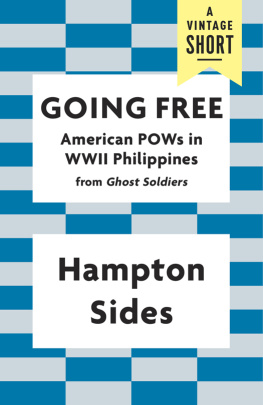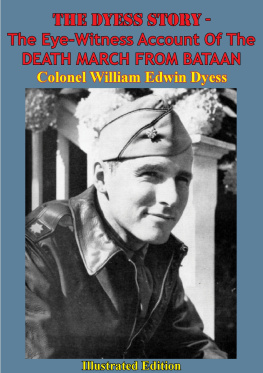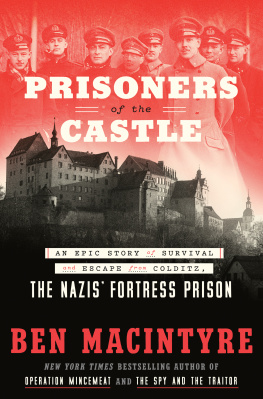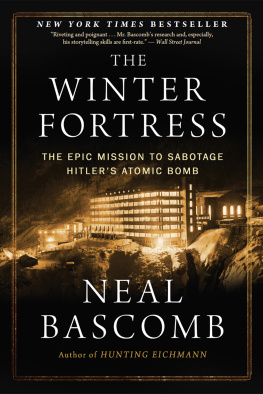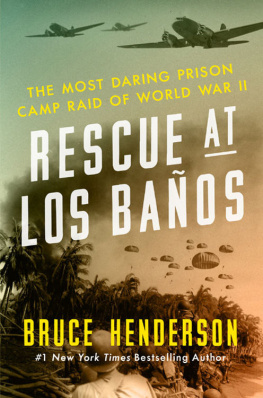
The Forgotten Story of
the Most Daring Prison Break
of the Pacific War
ESCAPE
from
DAVAO

John D. Lukacs


Simon & Schuster
1230 Avenue of the Americas
New York, NY 10020
www.simonandschuster
Copyright 2010 by John D. Lukacs
All rights reserved, including the right to reproduce this book
or portions thereof in any form whatsoever. For information address
Simon & Schuster Subsidiary Rights Department,
1230 Avenue of the Americas, New York, NY 10020
First Simon & Schuster hardcover edition June 2010
SIMON & SCHUSTER and colophon are registered trademarks of Simon & Schuster, Inc.
For information about special discounts for bulk purchases,
please contact Simon & Schuster Special Sales at
1-866-506-1949 or business@simonandschuster.com.
The Simon & Schuster Speakers Bureau can bring authors to your live event.
For more information or to book an event contact the Simon & Schuster Speakers Bureau
at 1-866-248-3049 or visit our website at www.simonspeakers.com.
Designed by Paul Dippolito
Manufactured in the United States of America
1 3 5 7 9 10 8 6 4 2
Library of Congress Cataloging-in-Publication Data
Lukacs, John D.
Escape from Davao : the forgotten story of the most daring prison break of the Pacific war / John D. Lukacs.1st Simon & Schuster hardcover ed.
p. cm.
1. World War, 19391945Prisoners and prisons, Japanese. 2. World War, 19391945
PhilippinesDavao City. 3. Prisoner-of-war escapesPhilippinesDavao CityHistory20th century. 4. Escaped prisoners of warUnited StatesBiography. 5. Escaped prisoners of warPhilippinesDavao CityBiography. 6. Davao City (Philippines)History, Military20th century. 7. PhilippinesHistoryJapanese occupation, 19421945.
8. World War, 19391945Underground movementsPhilippines. 9. Guerrillas
PhilippinesHistory20th century. 10. SoldiersUnited StatesBiography. I. Title.
D805.P6L85 2010
940.547252095997dc22 2010003238
ISBN 978-0-7432-6278-1 (ebook)
ISBN 978-1-4391-8043-3 (ebook)
To the memory
of my father,
John F. Lukacs
Contents
I had tried to put into words some of the things that I have experienced and observed during these past months, but I fail to find words adequate to an accurate portrayal. If any American could sit down and conjure before his mind the most diabolical of nightmares, he might perhaps come close to it, but none who have not gone [through] it could possibly have any idea of the tortures and the horror that these men are going through.
MAJ. WILLIAM EDWIN DYESS, AUGUST 16, 1943
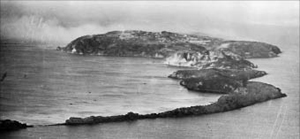
The island of Corregidor in Manila Bay was home to nearly 15,000 American and Filipino troops before its surrender to Japanese forces on May 6, 1942.
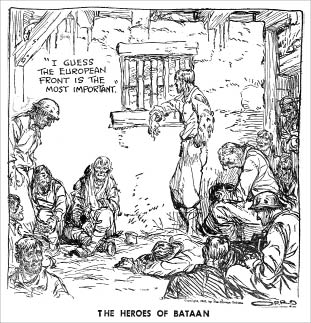
This cartoon appeared in the Chicago Tribune in late January 1944, upon the long-awaited release of the Dyess Story.
MacArthur Memorial Archives
Kyle Richards
Dr. Stewart Shofner
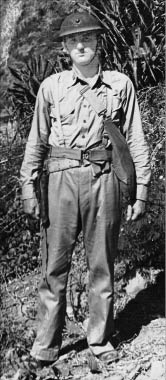
First Lt. Austin Shifty Shofner on Corregidor in early 1942.
Thirty-six-year-old Lt. Commander Melvyn H. McCoy was the oldest as well as the highest-ranking member of the escape party.

Then-Major William Edwin Dyess just months before his tragic death on December 23, 1943.
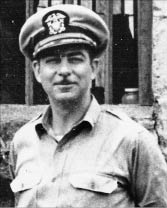
Dyess Air force Base
Kyle Richards
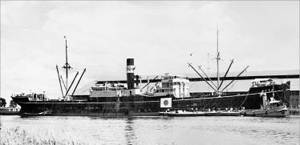
Nearly 1,000 American prisoners of war were crammed aboard the Erie Maru, a decrepit, coal-burning 7,000-ton merchant vessel, for the voyage from Manila to Mindanao.
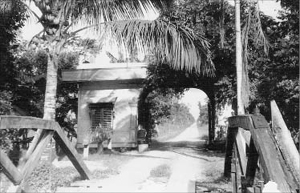
The main gate at the Davao Penal Colony, through which nearly 2,000 American prisoners of war entered the camp in the fall of 1942, would be the escapees first barrier to freedom.
Australian War Memorial
Carl Nordin

The American POWs in Dapecol were housed according to rank in these long, poorly maintained, barnlike barracks.
MacArthur Memorial Archives
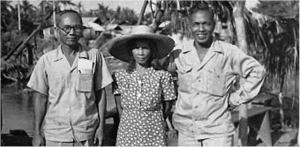
The escapees Filipino allies: (from left to right) Juan Acenas, assistant superintendent of the Davao Penal Colony; Mrs. Candido Abrina; Candido Pop Abrina, raconteur and Dapecol agricultural supervisor, 1946.
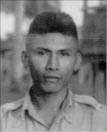
Claro Laureta, the diminutive, yet dynamic commander of the 107th Infantry Division, as well as all guerrilla forces in the Davao area, provided aid and assistance to the escapees following their breakout from Dapecol.
National Archives
Kyle Richards
Lt. Commander Charles Chick Parsons (left), the man described by General Douglas MacArthur as the bravest man I know, and Colonel Wendell Fertig, leader of the Mindanao guerrillas.
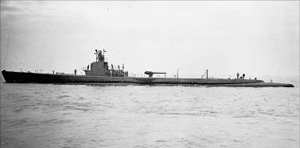
The USS Trout, the submarine that extracted the first group of escaped POWs from Mindanao on July 9, 1943, had a unique history of special missions.
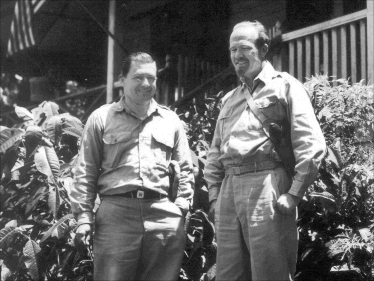
MacArthur Memorial Archives
U.S. Navy Submarine Force Museum
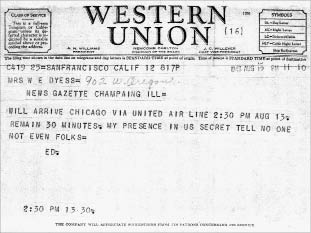
From left to right, Major Ed Dyess, Lt. Cmdr. Melvyn McCoy, General Douglas MacArthur, and Major Stephen Mellnik conversing in MacArthurs office in the A.M.P. Building in Brisbane, Australia, on July 30, 1943.
Next page

